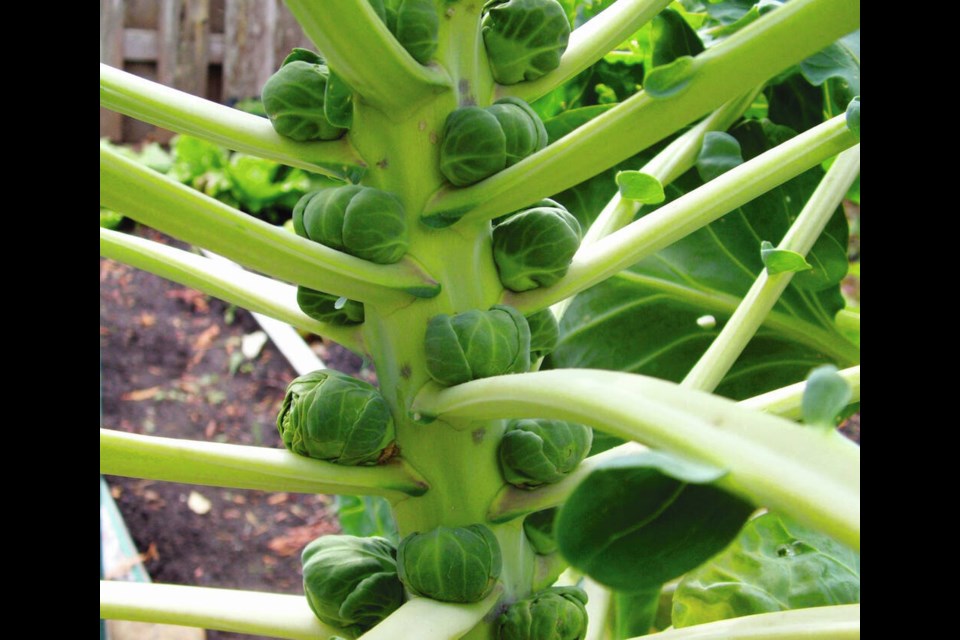Dear Helen: We have just returned from a holiday, missing, I think, the opportunity to seed vegetables for harvesting in the fall and winter. Is there anything that will yield a harvest if planted now?
F.P.
This is an ideal time for an outdoor sowing of hardy types of lettuce and of hardy greens such as spinach, arugula, mustards, corn salad and cilantro. Garlic is ideally planted in the third week of September.
For vegetables that needed an earlier start such as brussels sprouts, sprouting broccoli and kale, look for transplants now at local garden centres. Russell Nursery on Wain Road in North Saanich has let me know that they have an extensive selection of winter vegetables available. They grow their own transplants from seed.
Dear Helen: In my garden there are several shrubs and perennials in various stages of degradation. I’m wondering at what point you decide to give up on a plant.
F.G.
I give up on and dig out plants that are clearly dead, and those whose well-being demand more care than I have time, energy or inclination to manage. The soil in spaces created by this garden “revisioning” can then be plumped and filled with plants that bring new life into the landscape while requiring minimal maintenance.
August is an ideal month to survey the landscape, with a view to determining changes that would enhance a garden’s appeal and reduce its caregiver’s workload at the same time.
Dear Helen: I’ve noticed that in past columns you have recommended pruning back the stems of winter squash, making the cuts above the last formed fruits, at around this time. I understand this helps to nurture maturity in the already formed squashes. I have lots of new flowers and tiny fruits forming on my staked tomatoes. That seems to me similar to the squash plants continuing to flower and from new fruits. Should I cut back the tomatoes too at this time?
A.D.
Staking tomatoes, like winter squash plants, are “indeterminate.” That means they will keep on flowering and forming new fruits through the summer. This habit becomes an issue in August, when newly formed fruits on most varieties of both winter squash and staking tomatoes have no chance of ripening before the cold weather.
The solution is to trim the stems back. I look for the last formed fruit on each tomato and squash stem, and make the cut right above the first leaf or leaf stem growing beyond that last formed fruit.
Dear Helen: I’d appreciate any suggestions you might have for some sort of cover crop I could grow in my empty vegetable and flower plots while I am away next April, May and June. I’d be interested in anything that I could sow before I leave and dig under when I return.
D.W.
Among the cover crops that West Cost Seeds lists, crimson clover appears to be the most suitable. Seeded in late March, the plants would take between 70 and 90 days to bloom. The plants are “particularly succulent” and quick to break down when dug under or composted.
On your return, if you want to plant other things right away, the clover could be removed to the compost. Chopped down and dug under, the clover will break down in around 10 days.
Dear Helen: Because I heard they were very tasty, I ordered Mara des Bois strawberries. Over three years in my garden, the plants have grown exceptionally well but produced no berries. Right beside them, a single seaside strawberry plant has produced plenty of berries, just from that one plant. Is there some explanation you can think of?
W.D.
Fragaria vesca ‘Mara des Bois’ needs full sun to produce well, along with a fertile, moist, humus-rich and well-drained soil. Since this wood strawberry spreads on runners, why not lift a few plants and try them in different sunny places in the garden, or in containers, to see whether you can prompt a different result? Wait for a period of coolish weather to do this.
Your “seaside” strawberry plant is most likely Fragaria chiloensis (beach strawberry, Coastal strawberry, 91原创 wild strawberry), a very easy-growing native evergreen ground cover that thrives in any well-drained, ordinary soil, including sand, in full sun to part shade. It is probably just an easier-growing and more readily productive plant.


